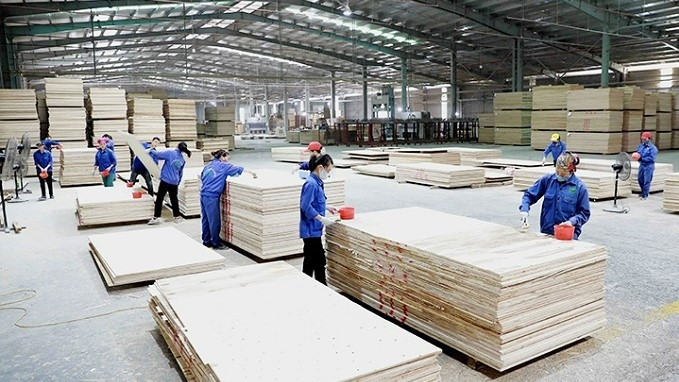If this growth momentum is maintained, the industry’s target of US$14-14.5 billion in export turnover in 2021 is quite achievable.
According to the General Department of Forestry under the Ministry of Agriculture and Rural Development, while many other industries have faced difficulties due to the epidemic, the export value of wood and forestry products was US$8.71 billion in the first six months of this year, including US$1.76 billion from woods of all kinds (up 23.6% over the same period last year), US$6.35 billion from wooden products (up 75.4%) and US$0.6 billion from non-timber forest products (up 72.9%).
The US, Japan, China, EU, and the Republic of Korea (ROK) continued to be the most important export markets for Vietnam’s wood and forestry products, with a total estimated export value of over US$7.68 billion (accounting for around 89% of the country’s total export turnover of wood and forestry products). In particular, exports to the US, China, Japan, EU and the ROK were estimated at over US$5 billion (a year-on-year increase of 99%), US$0.82 billion (up 22.9%), US$0.73 billion (up 11%), US$0.68 billion (up 54%) and US$0.76 billion (up 7%), respectively.
Regarding investment, the wood industry has seen 23 new projects worth a total of US$136.056 million from 9 countries and territories around the country in the first half of the year. The sector also recorded a 10 time capital increase worth US$45.28 million and 26 capital contributions to buy shares with total capital of US$41.14 million. Notably, beds, cabinets and tables saw rises in the three aspects of new investment projects, capital increases and capital contributions.
According to the Association of Vietnam Timber and Forest Products, the majority of wood production and processing enterprises have received export orders until the end of 2021. The demand for wood product exports, especially furniture, is expected to increase sharply as countries conduct social distancing and employees work from home, thereby pushing the need for home and office furniture. On the other hand, this is a time when global consumers have more need to find and purchase furniture and wooden products via websites. Meanwhile, Vietnamese timber products remain very attractive to consumers. In addition, enterprises have strictly complied with regulations on traceability and regarding the transparent origin of raw materials so their products are trusted by customers. The world’s economy is gradually recovering and the main timber import markets of Vietnam have reported rapid economic growth, leading to a sharp increase in demand. Experts also say that Vietnam’s timber and wood product exports will reach their set targets for the remaining months of 2021.
Recently, several forest fires have taken place due to the impacts of the intense heat, droughts lasting many days and the burning season for farming, causing damage to forestry. The prolonged COVID-19 epidemic has affected afforestation and scattered tree planting. Meanwhile, the inspection of afforestation has been limited and many localities have not proactively directed intensive planting and the conversion of large timber plantations. In addition, policies for the development of large timber plantations, such as those related to investment and credit support, land, insurance and investment in forestry infrastructure, have not been sufficient to encourage people and businesses.
Chairman of the Association of Vietnam Timber and Forest Products, Do Xuan lap, affirmed that in order to have a sustainable source of wood materials, the legality of imported wood is a vital issue today. The habit of using natural wood, especially precious wood species, is still relatively common. In fact, this habit has caused harm to the environment and to the wood industry. The US government is investigating Vietnam's wood industry based on allegations that Vietnam illegally imported tropical wood for domestic consumption and for export. This was a warning for wood importing enterprises that they must control the legality of imported wood sources. Director General of the General Department of Forestry Nguyen Quoc Tri also noted that the analysis of data in the first months of the year proved that the import and export of forestry products has witnessed many risks and low sustainability. Therefore, businesses need to strictly comply with regulations on timber imports. Localities should soon make plans to develop a stable source of raw materials in the country, while increasing the plantation of large timber forestry.
















